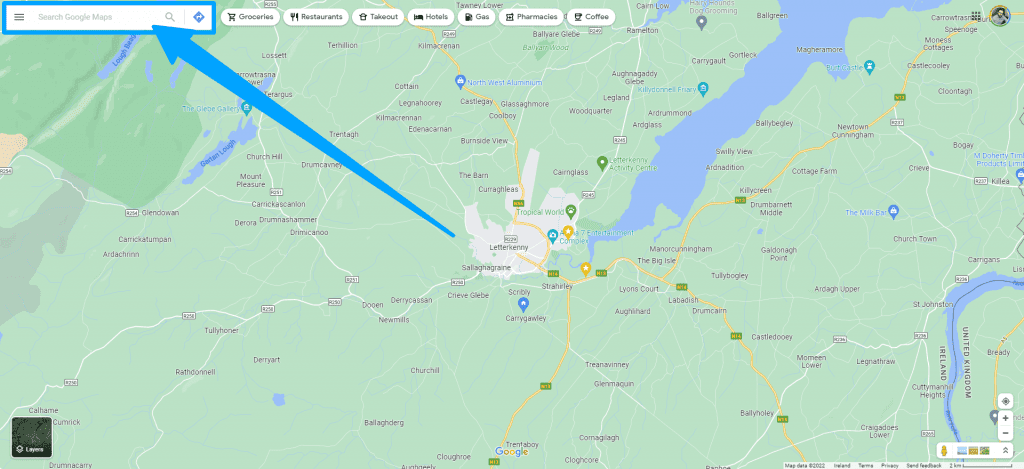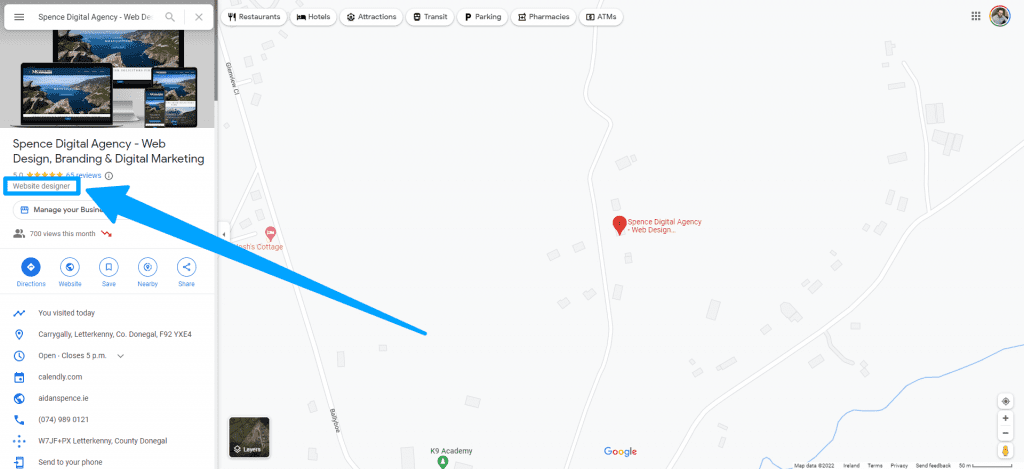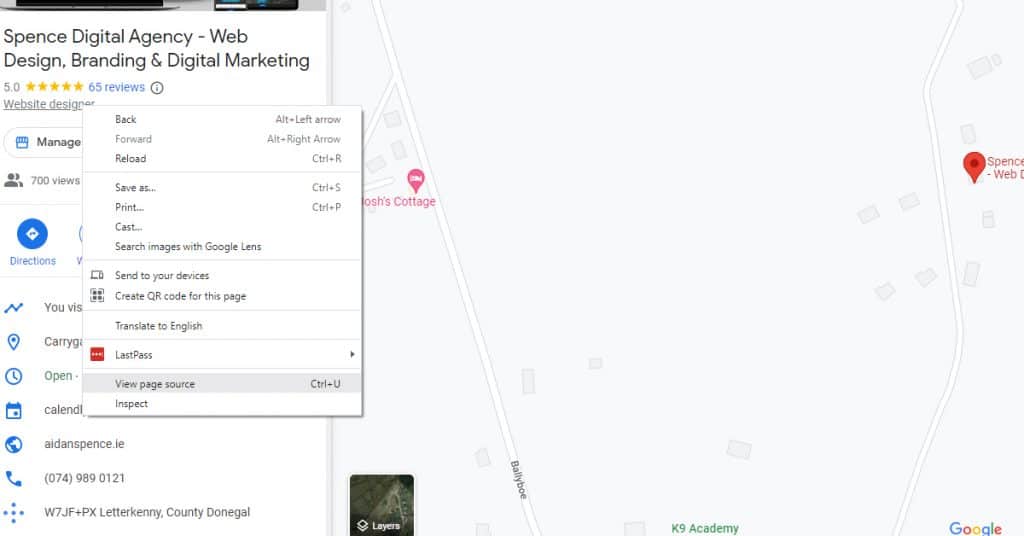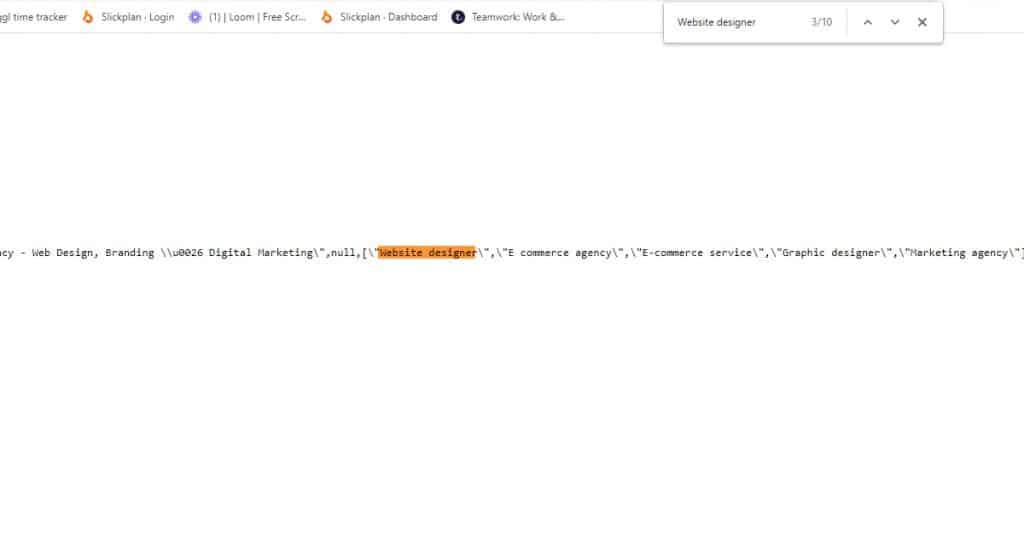Check out our Simple Trick Below
Follow these steps to find competitor categories:
Search your preferred keyword for your local business. For Us it's "Web Design"
- Go to Google Maps
- Find competitor’s Google Maps Listing
- Place mouse cursor next to primary business category
- Right-click on the competitor’s Google Maps Listing
- Select the “View Page Source” option
- Use CTRL + F or CMD + F to open the document search box
- Enter the competitor’s primary GMB category
- Scroll through the highlighted text in the source code to find secondary categories
Making A List of Competitors
It’s important to note that competition may vary for each marketing channel. For example, who is most prominent offline may not be who is most prominent in Google.
We’re only focused on who’s winning on Google, specifically in Local Pack (also known as 3-Pack).
The first step is to identify the broad service offering. EG: Plumber, Home builder, Web Designer, Roofer, etc.
Once this has been determined, add a geo-modifier to it for the targeted service area. EG: “web designer Donegal”
Note the competitors in Local Pack.
Searching competitors in Google Maps
Once the competition has been identified, head over to Google Maps, and enter the name of a competitor.

Then, find the competitor’s primary Google My Business category…

Copy this (Control + C on Windows or Command + C on Mac), and get ready to see the magic…
Viewing the Source Code of the Google Listing

When doing this, make sure that the cursor is on the panel that contains the primary category before clicking “View Page Source” (otherwise, this won’t work).
Doing so will display the competitor’s Google My Business categories.
Next, search the source code for the primary category.
This can be done using Control + F on Windows or Command + F on Mac.

Everything to the right of the highlighted Primary Category represents the competitor’s additional GMB Categories.
The auditing process can be completed for different keywords, locations, or at a national level to gather more insights.
Note the common denominators between the competitors, especially the primary category. If this is consistent across the competitors who are ranking in the top 3 positions in Local Pack, it’s probably a good idea to adopt it as your own!
If used properly, this method can be extremely impactful for Local SEO, and used to win in Google’s Local Pack.

